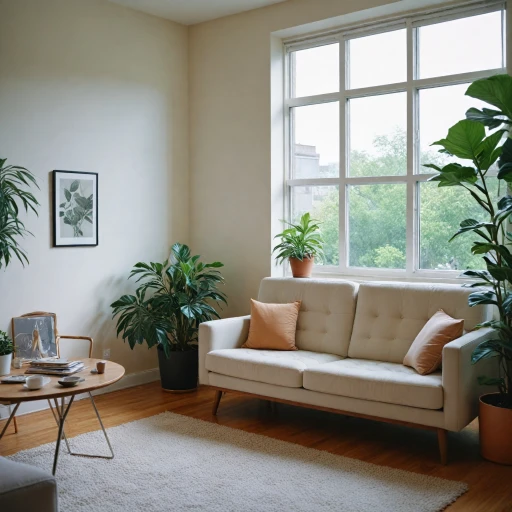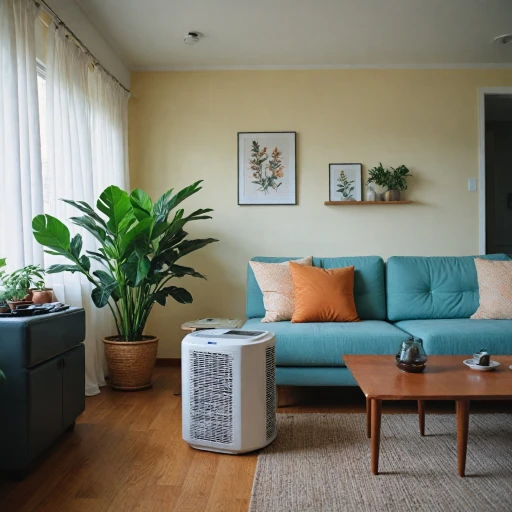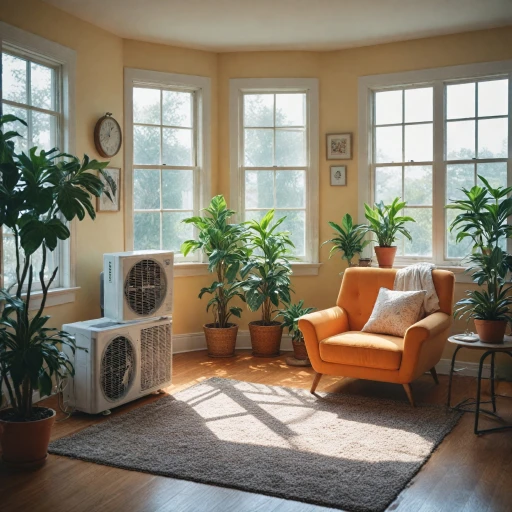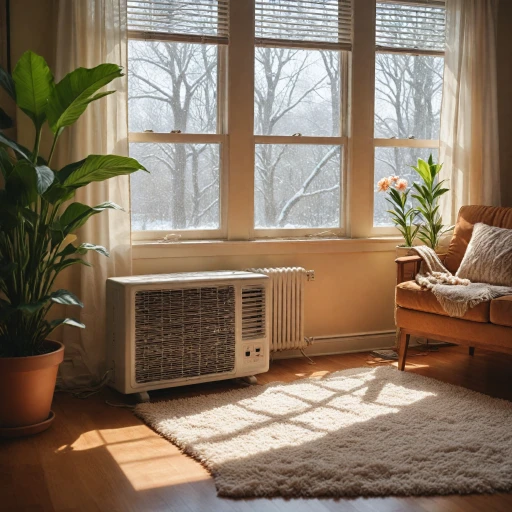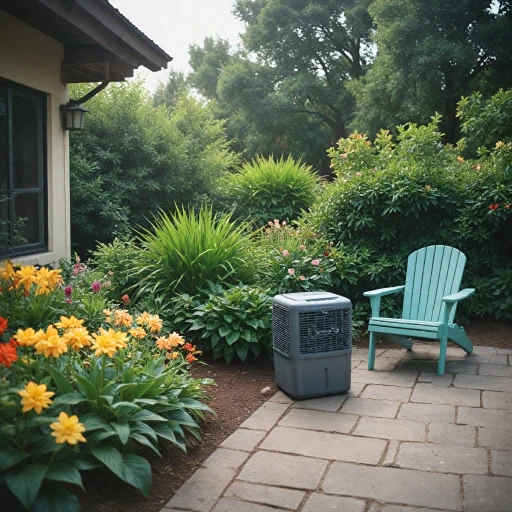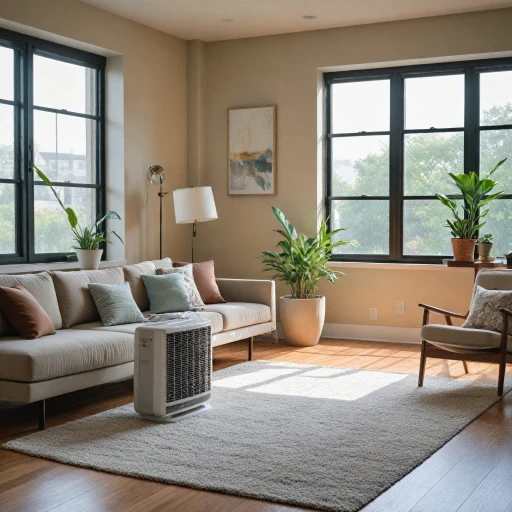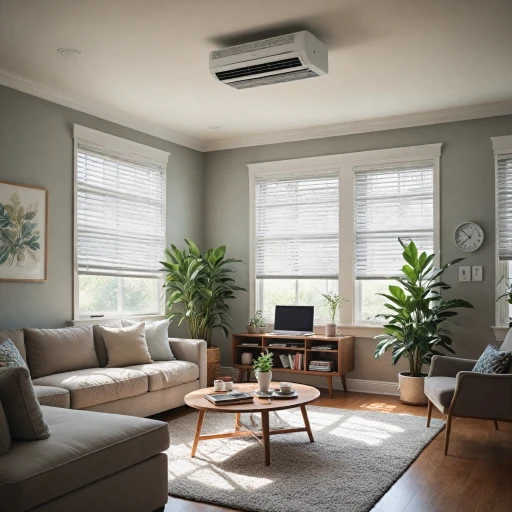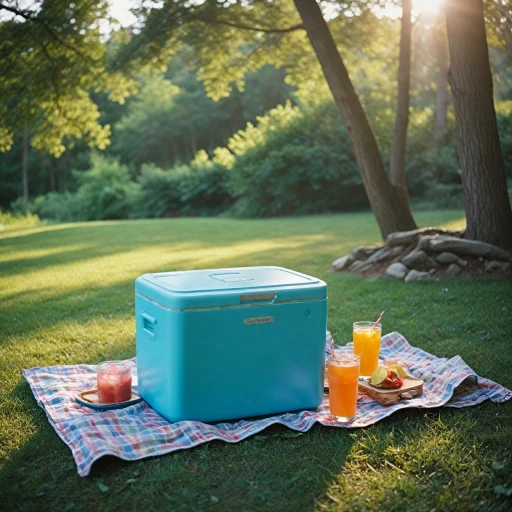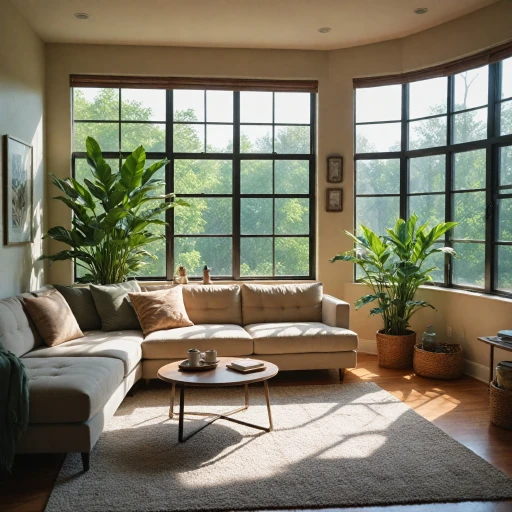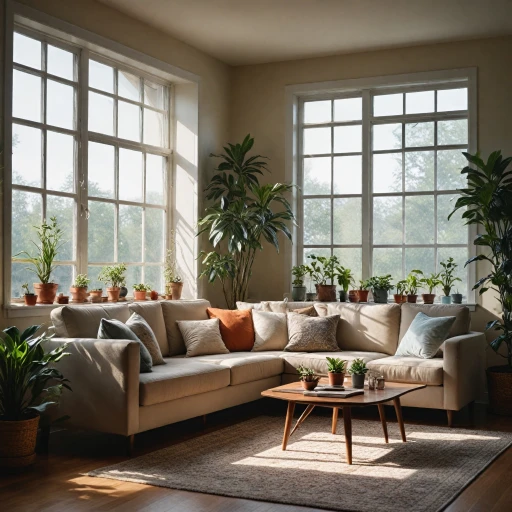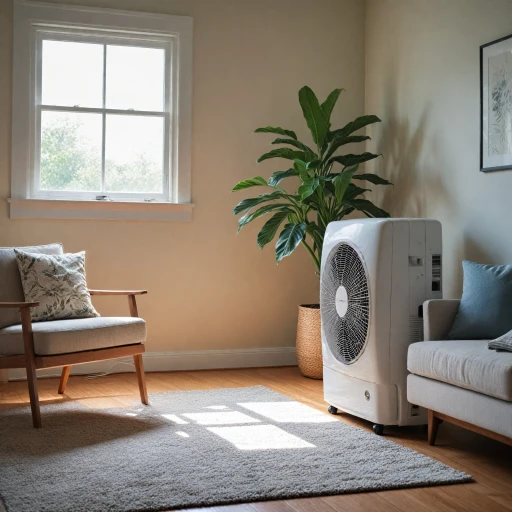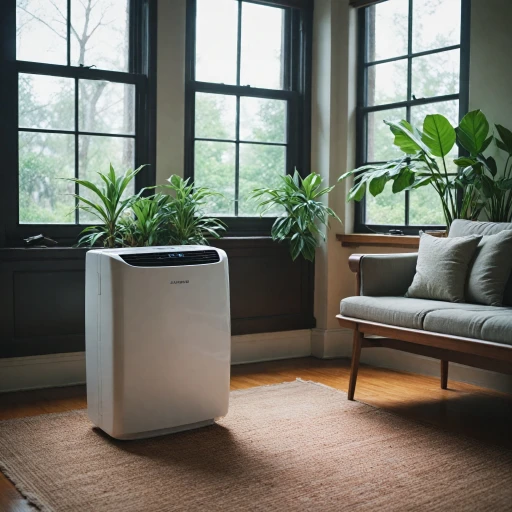
What is a Portable Swamp Air Conditioner?
In the quest for sustainable and efficient cooling solutions, portable swamp air conditioners have emerged as a viable alternative. Often referred to as evaporative air coolers or swamp coolers, these devices offer a blend of functionality and ease-of-use that appeals to many consumers looking for an efficient way to keep their environment cool, particularly in dry climates.
What Sets It Apart From Traditional Systems?
Unlike traditional air conditioners that use refrigerant gases, these air coolers rely on the natural process of evaporation to cool the air. As the portable evaporative air cooler draws in hot outdoor air, it passes through water-saturated pads, often made of honeycomb cooling material. This process effectively lowers the air temperature, releasing cooler air back into the environment. A major advantage of this method is its lower energy consumption compared to conventional air conditioners, which can lead to reduced operational costs.
Features to Look For
Typically, portable swamp air conditioners come with a variety of features designed to enhance user control and convenience. Some models are equipped with a water tank, which has to be filled with water, and even ice packs in some cases, to optimize the cooling effect. Features such as a remote control, adjustable timers, and various cooling modes afford users the ability to personalize their cooling experience. Certain products offer outdoor specific features, which may be advantageous for outdoor events or camping adventures. If you’re in the market for a portable evaporative cooler for such activities, choosing the best portable AC unit for your camping adventure might provide further insights.
Environmental and Cost Benefits
In addition to their energy efficiency, portable swamp coolers are lauded for being eco-friendly. By eliminating harmful refrigerants and employing simple mechanics, their environmental impact is significantly lessened. Pricing is also a notable advantage; with a generally lower regular price compared to traditional systems, they offer affordability without sacrificing effective cooling. However, it’s crucial to consider the Cooler CFM (cubic feet per minute), as it determines how much air the swamp cooler can move, directly impacting its effectiveness in cooling your space.
Benefits of Using a Portable Swamp Air Conditioner
Advantages of Opting for a Portable Swamp Air Conditioner
Portable swamp air conditioners, often referred to as evaporative coolers or swamp coolers, offer numerous benefits that enhance their appeal in the cooling market. These versatile units make use of the natural process of evaporation to cool air, which can provide comfort during warm temperatures.- Energy Efficiency: Portable swamp air conditioners consume significantly less energy compared to traditional air conditioners. This can result in lower electricity bills, especially during peak usage periods.
- Eco-Friendly Cooling: By relying on water and the principle of evaporation rather than harmful refrigerants, these units have a lower environmental impact. This makes them a more sustainable choice for eco-conscious consumers.
- Affordability: With a regular price usually less than that of standard air conditioning units, portable evaporative air coolers provide an affordable solution for those seeking effective and budget-friendly cooling options. Learn more about choosing the right portable air conditioner with heating functionality to optimize your investment.
- Flexibility and Convenience: Equipped with features like a remote control, timer, and multi-speed settings, these air coolers allow for easy temperature adjustments and operational control. Their portable nature means they can be moved easily from one room to another or even used for outdoor activities.
- Effective Humidity Control: Apart from cooling, swamp coolers add moisture to the air, which can be particularly beneficial in dry climates. This feature not only improves comfort but can also prevent dryness in skin and respiratory systems.
- Ice Packs and Honeycomb Cooling: Many models come with ice packs or a honeycomb cooling media to enhance cooling performance, ensuring the air is extra cool and refreshing.
How to Choose the Right Portable Swamp Air Conditioner
Factors to Consider When Selecting Your Swamp Cooler
Choosing the right portable swamp air conditioner can felt overwhelming with the abundance of choices available in the market. Here’s a guide to help make an informed decision.- Cooling Capacity and Efficiency: Evaluate the cooler's capacity which is generally measured in Cubic Feet per Minute (CFM). Larger rooms require a unit with a higher CFM for efficient cooling. Assess the evaporative cooling efficiency to ensure optimal performance.
- Water Tank Capacity: Consider the size of the water tank. A larger water tank generally means less frequent refills, which can be convenient for extended cooling durations. Additionally, check if the unit supports ice packs for enhanced cooling.
- Portability and Mobility: A portable air cooler should be easy to move around. Opt for models that come with wheels and ergonomic handles, making it effortless to position the unit wherever needed.
- Remote and Timer Control: Modern portable evaporative coolers often feature a remote control for ease of use. Look for units with a programmable timer, allowing you to control the duration and schedule cooling periods efficiently.
- Cooling Media: Check if the swamp cooler uses honeycomb cooling pads as they are known to provide efficient and uniform cooling. The effectiveness of the cooling media directly impacts the air conditioner's performance.
- Price Point and Budget: Manufacturers offer various price ranges for swamp coolers. It’s vital to compare the regular price and product features to ensure value for money. Higher-end models tend to offer additional features like air filtration.
Installation and Maintenance Tips
Setting Up Your Portable Swamp Air Conditioner for Optimal Performance
A portable swamp cooler, also known as an evaporative cooler, provides an efficient alternative to traditional air conditioners, using air, water, and a honeycomb cooling system to cool your space. Proper installation and regular maintenance are crucial for its optimal performance. Here's a detailed guide to help you get started.Positioning Your Unit
- Location: Place the portable evaporative air conditioner in a well-ventilated area. It pulls in air to cool, so ensure there's enough circulation.
- Direct the Airflow: Aim to position the unit where it can distribute cooler air effectively throughout the room. A central location is usually best.
Water Tank and Ice Packs
- Filling the Tank: Regularly fill the water tank with clean water. As the essential component for the cooling process, maintaining the correct water level is key.
- Adding Ice Packs: To enhance cooling during particularly hot days, ice or ice packs can be added to the water tank, boosting the efficiency of the cooler.
Remote Control and Timer Setup
- Using the Remote Control: Most modern portable air coolers come with a handy remote control. Familiarize yourself with its functions to easily adjust settings without having to be next to the unit.
- Setting the Timer: Utilizing the timer function can offer energy savings by programming the swamp cooler to operate only when needed.
Routine Maintenance Tips
- Clean Regularly: To prevent bacteria and scale buildup, clean the water tank and air filter regularly.
- Inspect and Replace: Monitor the condition of the honeycomb cooling pads. Signs of wear necessitate replacement to ensure efficient cooling.
Common Challenges and Solutions
Tackling the Common Hiccups of Evaporative Coolers
When utilizing portable swamp air conditioners, it's crucial to be prepared for potential hurdles. Despite their ample benefits, such as eco-friendly cooling by using water evaporation, challenges can arise. Here’s a guide to navigating common issues and implementing effective solutions:- Water Tank Management: Portable evaporative air coolers require a steady supply of water, so a frequent fill-up of the water tank is necessary, especially during prolonged use. To mitigate the inconvenience of frequent refills, consider models with larger tanks or ones equipped with water level indicators.
- Achieving Optimal Cooling: If your air cooler doesn't seem to be cutting it, ensure it has enough airflow. The effectiveness of swamp coolers increases in well-ventilated spaces. Make sure windows or doors are slightly open to allow warm air to be replaced with cooler air.
- Air and Water Quality: Dust accumulation can impede honeycomb cooling pads, diminishing performance. Regular cleaning is crucial to maintain efficiency and air quality. Furthermore, using clean water helps prevent unpleasant odors.
- Noise Levels: Although portable evaporative air conditioning units operate quieter than many traditional air conditioners, noise can be a concern. Look for units with adjustable fan settings or those that employ noise reduction technology.
- Remote Control Malfunctions: In the realm of convenience, cooler remotes can sometimes falter. It’s advisable to always have replacement batteries available. Additionally, if a remote still doesn't function, ensure there is no obstruction between the remote and the sensor on the unit.
- Running Costs and Efficiency: While swamp coolers generally consume less electricity than refrigerated air conditioners, consider the regular price of ice packs if you use them to enhance cooling. Optimizing usage (e.g., setting a timer) enhances cost efficiency while maintaining a comfortable environment without breaking the bank.
Comparing Portable Swamp Air Conditioners with Traditional Units
Contrasting Efficiency and Performance
When debating between portable swamp air conditioners and traditional units, efficiency and performance are key considerations. Portable swamp coolers generally operate by using water in a tank to create cooling through evaporation. This method tends to use less energy than traditional air conditioners, making evaporative air coolers an eco-friendly choice.
On the other hand, traditional air conditioners can offer a more consistent cooling experience, as they rely on refrigerants and compressors to lower room temperature regardless of humidity levels. This means that in drier climates, swamp coolers can be extremely effective, providing cooler air at a fraction of the energy cost. However, in humid areas, their effectiveness can diminish significantly, as the air is already laden with moisture.
Installation and Cost Considerations
From a cost perspective, the price of portable swamp coolers is generally lower than that of traditional air conditioners, with a lower upfront investment and reduced energy costs over time. Additionally, they are easier to install, with many models requiring only access to a power outlet and water source to start cooling. This makes them ideal for renters or people seeking a non-permanent cooling solution.
While the regular price of portable air coolers may vary, they often include features like a remote control and a built-in timer, enhancing convenience. Models with larger water tanks or those that allow for ice packs can offer extended periods of cooler air without frequent refilling.
Suitability for Different Environments
Traditional air conditioners are versatile across different environments, handling both humidity and temperature fluctuations well. In contrast, swamp coolers shine in hot, dry environments, making them less suitable for regions with high humidity.
When contemplating your choice, consider the specific environment where the unit will be used. A portable evaporative cooler may serve perfectly in an outdoor or semi-outdoor space where the air’s dryness makes conventional air conditioning less efficient.
Maintenance and User Convenience
In terms of maintenance, portable swamp coolers typically require regular cleaning of their honeycomb cooling pads and frequent checks on the water tank. Traditional air conditioners, while requiring a different maintenance routine, may call for professional servicing to manage refrigerant levels and optimize performance.
Convenience features in both types, such as cooler remote controls, programmable timers, and digital displays, ultimately enhance user experience, allowing users to manage their cooling according to personal preferences.

